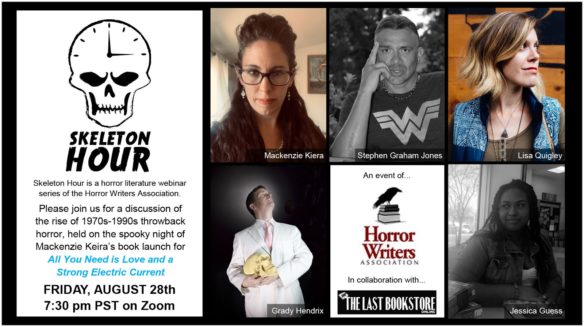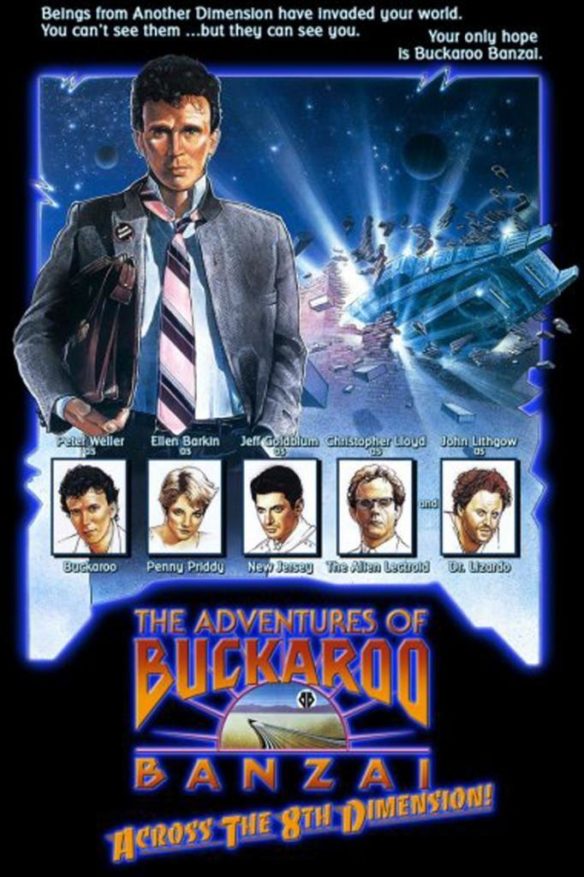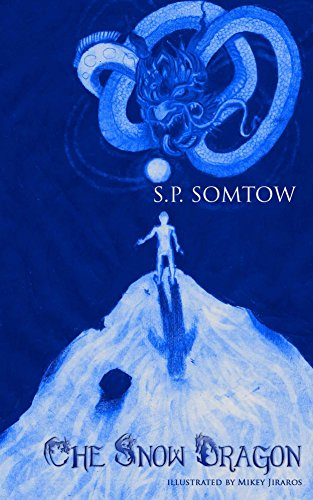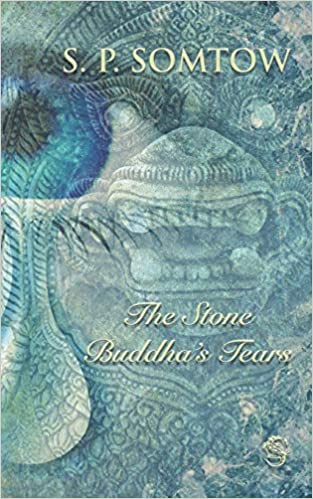(1) RECONVENE REPORT. [Item by Cat Eldridge.] ReCONvene, the one-day virtual con of NESFA, was this afternoon, so I paid my ten dollars and attended via Zoom.
It was worth devoting much of the afternoon to it for just one conversation, the Worldbuilding in Speculative Fiction panel which had Ellen Kushner as moderator with P. Djèlí Clark, Cerece Rennie Murphy, Carlos Hernandez and, to my utter delight, Aliette de Bodard. I learned much about the writers and their worlds that I didn’t know. Like all items it allowed conversations among the fans as a text feed — I didn’t listen in too very much of that but they were getting a lot of participation.
Earlier on, Modernizing Fairy Tales and Myths with Adam Stemple as moderator had Victor Lavalle, Seanan McGuire, Catherynne Valente and Rebecca Roanhorse as panelists. Like the other Zoom groups I listened to, it was flawless in its sound and video. Lots of personal ethnic background here as basis for storytelling — most excellent.
The panels were good and they used Discord for follow up chats which I’ll admit I skipped. There was a tour of the art show which is less interesting than being there, but the writers were the reason to be there and they even did Kaffeeklatsches, solo conversations with authors, so I listened to Justina Ireland who I was hearing of for the first time and turned out to be fascinating.
All in all, it was a pleasant way to spend the afternoon. If Boskone is virtual next February (and I wouldn’t count against it being so), I’ll certainly pay for a virtual membership based on his trial run which was organized well and easy to use.

(2) THE ANSWER. Robert J. Sawyer has a piece in The Star today: “Robert J. Sawyer: We’re all living in a science-fiction novel now”.
As soon as Toronto let customers eat on restaurant patios again, I made a beeline for Orwell’s Pub — best dang chicken wings in the city. The indoor restaurant was closed, and Chris, the guy who usually tends bar, was serving. When he came by my table, he quipped, “Seems like we’re all living in a Robert J. Sawyer novel now.”
I was surprised he knew who I was. Despite Orwell’s being a cosy “Cheers”-style “Where Everybody Knows Your Name” place, as a non-drinker, I’m usually invisible to bartenders. But Chris was right: we are living in a science-fiction novel now, and a dystopian one at that.
Since my latest novel, “The Oppenheimer Alternative,” is about the Manhattan Project, I often get asked what should be the next big-science undertaking with an all-but-unlimited budget bringing together our brightest minds.
My answer: developing a general antiviral technique, rather than an endless succession of vaccines targeting one, and only one, specific virus. The old method is why our annual flu shots are sometimes ineffective; we’d guessed wrong about which strain of flu would become prevalent. It’s also why we’ve never had a vaccine against the common cold, which is caused by a vast, ever-mutating range of coronaviruses.
Viruses aren’t even alive. They’re just bits of genetic code encased in a protein shell, sometimes (as with the novel coronavirus plaguing us now) slicked down with a fatty coating. And that’s it.
(3) FREEDOM AT MIDNGHT. Somtow Sucharitkul will give away free eBook versions of three of his YA novels from August 17-19, starting at midnight Pacific time.
- The Snow Dragon https://amazon.com/dp/B07B2HT4C3
- Vampire’s Beautiful Daughter https://amazon.com/dp/B07FZSMM28
- Stone Buddha’s Tears https://amazon.com/dp/0990014258
(4) FUTURE FREE READS. Ellen Datlow told HWA today about the dark fantasy reading coming out for free on the Tor.com website in the next few weeks:
- “Wait for Night” by Stephen Graham Jones, a horror story -September 2 (which is when his novella Night Of The Mannequins will also be out).
- “The Little Witch” by M. Rickert, a dark fantasy novelette-October 28
- “On Safari in R’lyeh and Carcosa with Gun and Camera” by Elizabeth Bear, a dark fantasy novelette-November 18
(5) THE REINVENTED COUNTRY. “HBO’s ‘Lovecraft Country’ Brings Viewers To A World Of Monsters, Magic and Racism” – an NPR Morning Edition transcript.
ERIC DEGGANS, BYLINE: Here’s the thing about being a Black nerd who loves science fiction, fantasy and superhero stories. Often, you wind up admiring work created to glorify people who are the exact opposite of you. That’s something the aptly-named bookworm Atticus Freeman tries to explain while telling a female friend about the latest novel he was reading on a long bus ride, the 1912 book “A Princess Of Mars” and its star, planet-jumping hero John Carter.
(SOUNDBITE OF TV SHOW, “LOVECRAFT COUNTRY”)
UNIDENTIFIED ACTOR #1: (As character) You said the hero was a Confederate officer.
JONATHAN MAJORS: (As Atticus Freeman) Ex-Confederate.
UNIDENTIFIED ACTOR #1: (As character) He fought for slavery. You don’t get to put a ex in front of that.
MAJORS: (As Atticus Freeman) Stories are like people. Loving them doesn’t make them perfect. You just try to cherish them and overlook their flaws.
DEGGANS: That could be something of a mission statement for the “Lovecraft Country,” a series based on the recent novel of the same name. The book and series reference the work of renowned horror novelist H.P. Lovecraft, known to have racist views about African Americans. The show compares the work of Lovecraftian (ph) supernatural beings which could have sprung from his books to the racism Black people faced in 1950s-era America.
Atticus Freeman, played by “Da 5 Bloods” costar Jonathan Majors, is a Korean War veteran who returns home to find his missing father. Before long, he’s enlisted help from his Uncle George, played by Courtney B. Vance, and his friend Letitia, played by Jurnee Smollett. They must travel across the country from Chicago to follow a clue. And along the way, they run into a not-too-helpful police officer who informs them Black people aren’t allowed in the area after dark.
(SOUNDBITE OF TV SHOW, “LOVECRAFT COUNTRY”)
JAMIE HARRIS: (As Sheriff Eustace Hunt) Any of y’all know what a sundown town is?
MAJORS: (As Atticus Freeman) Yes, sir. We do.
HARRIS: (As Sheriff Eustace Hunt) Well, this is a sundown county. If I’d have found you after dark, it would have been my sworn duty to hang every single one of you from them trees.
MAJORS: (As Atticus Freeman) It’s not sundown yet.
DEGGANS: But when the police officer and his buddies try to lynch the trio, everyone is attacked by huge, teethy, flesh-eating monsters who chase them into a cabin. Uncle George, who’s just as much of a bookworm as Atticus, has an idea of what they might be facing.
…At a time when the world is still reeling from seeing a Black man die with a white policeman’s knee on his neck, there is no better moment for HBO’s gripping “Lovecraft Country” to reinvent a supernatural tale.
(6) FLOURISHNG MAGIC. Rebecca Roanhorse tells the New York Times: “‘We’ve Already Survived an Apocalypse’: Indigenous Writers Are Changing Sci-Fi”. Tagline: “Long underrepresented in genre fiction, Native American and First Nations authors are reshaping its otherworldly (but still often Eurocentric) worlds.”
When Cherie Dimaline was growing up near Penetanguishene, a small town on the Georgian Bay in Ontario, her grandmother and great-aunts told her stories about a werewolf-like monster called the rogarou. It wasn’t spoken of as a mythical creature but as an actual threat, the embodiment of danger in a place where Indigenous women face heightened risk of violence.
“This wasn’t like, here’s a metaphor,” she said. “They would say, ‘The rogarou’s out, and he’s really hungry.’”
Decades later, Dimaline, a member of the Métis Nation in Canada, was working on a novel about a woman whose missing husband reappears with no memory of her, seemingly under a spell. She needed a charismatic villain, and when the rogarou — a wily trickster figure in Métis oral traditions — popped into her head, she realized the creature had never been given its due in popular culture.
That flash of inspiration turned into “Empire of Wild,” a genre-bending novel whose modern Indigenous characters confront environmental degradation, discrimination and the threat of cultural erasure, all while battling a devious monster….
(7) EATING THE FANTASTIC. Scott Edelman hopes you all will accept his invitation to polish off prawn pizza with Stephen Dedman on Episode 125 of the Eating the Fantastic podcast.

This episode I have breakfast while Australian writer Stephen Dedman has dinner 12 hours in my future.
Stephen has published more than 100 short stories, some of which I was privileged to publish back when I was editing Science Fiction Age magazine. You can find many of those stories in his collections The Lady of Situations (1999) and Never Seen by Waking Eyes (2005). His novels, which include The Art of Arrow Cutting (1997), Foreign Bodies (1999), Shadows Bite (2001), and others, have been Bram Stoker, Aurealis, William L. Crawford, and Ditmar Award nominees. He’s also written role-playing games, stageplays, erotica, and westerns. And he at one time worked as a “used dinosaur parts salesman,” a job which had me extremely curious — and as you listen to us chat and chew, you’ll find out all about it.
We discussed how the Apollo 11 moon landing introduced him to science fiction, what his father told him which changed his plan to become a cartoonist, the huge difference the Internet made in the lives of Australian writers, his creative trick for getting his first poem published, what acting taught him about being funny in the midst of tragedy, his former job as a used dinosaur parts salesman, the way page one tells him whether he’s got a short story or novel idea, how Harlan Ellison became the first American editor to buy one of his stories, and much more.
(8) MIND’S EYE. At LitHub, Kathleen Rooney discusses “How Fiction Allows Us to Inhabit Animal Consciousness”.
For centuries, human thinking—at least in the West—has been dominated by the notion, said to have originated with Aristotle, of the Scala Naturae, or the Ladder of Life. Also known as the Great Chain of Being, this concept establishes a hierarchy in which all life forms can be arranged in ascending degrees of perfection with humans, conveniently, at the topmost rung. Even after Darwin came along and replaced this model with his considerably less vertical Tree of Life, the idea of the human mind as the apex of biological consciousness has persisted.
Increasingly, in the face of climate catastrophe, more humans are beginning to question their hubris. In the introduction to their 2017 book Arts of Living on a Damaged Planet: Ghosts and Monsters of the Anthropocene, the editors note: “Some scientists argue that the rate of biological extinction is now several hundred times beyond its historical levels. We might lose a majority of all species by the end of the 21st century.” This, the arguable point of no return, affords a chance to examine the received belief in human exceptionalism. Science writing in particular and nonfiction in general have much to say regarding the similarities between human and non-human minds, but fiction offers opportunities to explore this interconnectedness as well. After all, if fiction has the power to show us another individual’s private and interior uniqueness, then why not depict animals possessing such interiority?
(9) YOU KNOW IT IN YOUR BONES. Skeleton Hour is a new monthly horror literature webinar series presented as an Horror Writers Association event in collaboration with The Last Bookstore in Los Angeles.
Each panel will be an hour long and bring together 3-5 authors to discuss a specific topic in horror with a moderator guiding the discussion. Panels will take place on Zoom, with the audience able to ask questions in the chat window. The series launches Friday, August 28th, with the first panel focused on 70s-90s throwback horror including authors of novellas from the Rewind or Die series published by Unnerving Press: Mackenzie Kiera, Stephen Graham Jones, Lisa Quigley, and Jessica Guess, as well as noted subject matter expert Grady Hendrix!
Register for the Zoom webinar here: https://zoom.us/webinar/register/WN_2C6hfS-ARoGvvNontWmiqg. The event will also be live streamed by HWA on Facebook and YouTube.

(10) PUBLIC SERVICE ANNOUNCEMENT. Be sure to consult NASA’s Guide to Near-light-speed Travel before blasting off.
So, you’ve just put the finishing touches on upgrades to your spaceship, and now it can fly at almost the speed of light. We’re not quite sure how you pulled it off, but congratulations! Before you fly off on your next vacation, however, watch this handy video to learn more about near-light-speed safety considerations, travel times, and distances between some popular destinations around the universe.
(11) MEDIA BIRTHDAY.
- August 15, 1984 — The Adventures of Buckaroo Banzai Across the 8th Dimension premiered. Directed by and produced by W.D. Richter (with co-production by Neil Canton), the screenplay was by Earl Mac Rauch who did nothing else of a genre nature. Primary cast was Peter Weller, Ellen Barkin, John Lithgow, Jeff Goldblum and Christopher Lloyd. Initial critical response was generally negative with a few claiming the script was unintelligible. More than one said it was too hip for its good. No, it didn’t do well at the box office but has since become a cult film, and the audience reviewers at Rotten Tomatoes give an excellent 70% rating. (CE)

(12) TODAY’S BIRTHDAYS.
[Compiled by Cat Eldridge and John Hertz.]
- Born August 15, 1771 – Sir Walter Scott, Bt. Lawyer, reviewer, antiquarian, poet, novelist; in the last three, fantastic elements recur; in the last two, by his doing; his reputation has soared, fallen, soared again. He may yet prove timeless. He wrote “Breathes there the man with soul so dead” and “Oh, what a tangled web we weave / When first we practice to deceive!” Rossini, Donizetti, Schubert, Beethoven set his words to music. His baronetcy became extinct upon the death of his son. (Died 1832) [JH]
- Born August 15, 1858 — E. Nesbit. She wrote or collaborated on more than sixty books of children’s literature including the Five Children Universe series. She was also a political activist and co-founded the Fabian Society, a socialist organization later affiliated to the Labour Party. (Died 1924.) (CE)
- Born August 15, 1907 – Jack Snow. Wrote Who’s Who in Oz (1954), rightly praised by Anthony Boucher (“Recommended Reading”, Magazine of Fantasy & Science Fiction, Mar 55). By then JS had written two Oz novels of his own, five darker short stories for Weird Tales. When Frank Baum, the first and arguably best Oztorian, died in 1919, JS offered to succeed him – age 12; he was turned down. Matching or at least harmonizing with Baum’s style has been elusive ever since; Who’s Who which could neither treat at length nor argue is masterly, as Boucher noted. (Died 1956) [JH]
- Born August 15, 1917 — John Joseph McGuire. Best remembered as a co-writer with H. Beam Piper of A Planet for Texans, Hunter Patrol, Crisis in 2140 and The Return, all of which I’ve read. His solo fiction was a bare handful and I don’t think I’ve encountered it. The works with Piper are available from the usual digital suspects as is a novella of his called The Reason Prisoner. It’s listed as being public domain, so’s free there. (Died 1981.) (CE)
- Born August 15, 1932 — Robert L. Forward. Physicist and SF writer whose eleven novels I find are often quite great on ideas and quite thin on character development. Dragon’s Egg is fascinating as a first contact novel, and Saturn Rukh is another first contact novel that’s just as interesting. (Died 2002.) (CE)
- Born August 15, 1933 – Bjo Trimble, 86. (There should be a circumflex over the j, an Esperantism indicating the pronunciation “bee-joe”, but the software won’t allow it.) Omnifan preceding Bruce Pelz. Her vitality and wit sparked LASFS (L.A. Science Fantasy Soc.) out of a slump, authored SF con Art Shows (for which she still refuses credit), led a letter-writing campaign that saved Star Trek from being scrapped (see On the Good Ship “Enterprise”), flourished in fanart, concocted cons and costumes. Received the Big Heart (our highest service award) in 1964, possibly the youngest ever; Inkpot, 1974 (its first year); Fan Guest of Honor at Dragon*Con 1995 the 6th NASFiC (North America SF Con, since 1975 held when the Worldcon is overseas). She and husband John have the Life Achievement Award from the Int’l Costumers Guild. They were early Baroness and Baron in the Society for Creative Anachronism, where she has the Order of the Laurel (arts & sciences), both the Order of the Pelican (service). Together co-chaired Westercon 23; were Fan Guests of Honor at ConJosé the 60th Worldcon. [JH]
- Born August 15, 1934 – Darrell K. Sweet. Three hundred fifty covers for us, seventy-five interiors; perhaps 3,000 images all told. Here is Space Cadet. Here is Beyond the Blue Event Horizon. Here is The Dictionary of SF Places. Here is The Eye of the World. Here is “The Gap Dragon and Princess Ivy”. Artbook, Beyond Fantasy. Graphic Artist Guest of Honor at Tuckercon the 9th NASFiC; World Fantasy Con 2010; LoneStarCon 3 the 71st Worldcon which had to celebrate him posthumously. (Died 2011) [JH]
- Born August 15, 1943 — Barbara Bouchet, 77. Yes, I’ve a weakness for performers who’ve shown up on the original Trek. She plays Kelinda in “By Any Other Name”. She also appeared in Casino Royale as Miss Moneypenny, a role always noting, and is Ava Vestok in Agent for H.A.R.M. which sounds like someone was rather unsuccessfully emulating The Man from U.N.C.L.E. It will be commented upon by Mystery Science Theater 3000. (CE)
- Born August 15, 1945 — Nigel Terry. His first role was John in A Lion in Winter which is at least genre adjacent, with his first genre role being King Arthur in Excalibur. Now there’s a bloody telling of the Arthurian myth. He’s General Cobb in the Tenth Doctor story, “The Doctor’s Daughter”, and on the Highlander series as Gabriel Piton in the “Eye of the Beholder” episode. He even played Harold Latimer in “The Greek Interpreter” on Sherlock Holmes. (Did 2015.) (CE)
- Born August 15, 1952 – Louise Marley, 68. A score of novels (some under other names) including both a Glass Harmonica and a Mozart’s Blood, as many shorter stories. Interviewed in Fantasy, Locus, Strange Horizons, Talebones. Two Endeavour Awards (note spelling; named for Captain Cook’s ship). Before authoring, sang with the Seattle Opera. See this autobiographical note. [JH]
- Born August 15, 1958 — Stephen Haffner, 62. Proprietor of Haffner Press which appears to be largely a mystery and genre reprint endeavor though he’s published such original anthologies as Edmond Hamilton & Leigh Brackett Day, October 16, 2010 and the non-fiction work Thirty-Five Years of the Jack Williamson Lectureship which he did with Patric Caldwell. (CE)
- Born August 15, 1964 – Carla Sinclair, 56. Editor of Net Chick. Author of Signal to Noise. Co-founder of bOING bOING. [JH]
- Born August 15, 1972 — Matthew Wood, 48. He started out as, and still is, a sound engineer but he also became a voice actor with his best know role being that of General Grievous in The Revenge of the Sith and The Clone Wars. He often does both at the same time as on the 2013 Star Trek into Darkness where he was the surviving sound editor and provided the ever so vague additional voices. (CE)
(13) COMICS SECTION.
(14) SETTING DOWN THE S.H.I.E.L.D. “‘Agents of S.H.I.E.L.D.’: Behind the Scenes of the Emotional Series Finale” – a New York Times Q&A with showrunners Maurissa Tancharoen and Jed Whedon.
…The resulting series, “Marvel’s Agents of S.H.I.E.L.D.,” went on to have a successful seven-season run on ABC, which ended Wednesday with a complex two-hour series finale. That didn’t seem especially likely after its rough debut in 2013. Some critics wanted flashier connections to Marvel cinema — where was Iron Man? — and the show had to operate in the shadow of the movies: The existence of magic couldn’t be acknowledged until it was first revealed by the 2016 film “Doctor Strange” first; “life-model decoys,” a kind of android, weren’t permissible until an android character appeared in “Avengers: Age of Ultron.”
But about halfway through its run, the show began reinventing itself, with characters ping-ponging through space, time and alternative realities. Once the writers freed themselves of the timeline and narrative restraints established by the movies (and even ignored a few), the series started to soar.
“We could just make up our own stories,” said Jed Whedon. “It was liberating.”
In the final season, S.H.I.E.L.D. agents hopped around different decades, with a pit stop in the 1980s that provided pure pop-geek joy. (Agent Coulson as Max Headroom? Check.)
But the show never lost its emotional core: the relationship between Agents Fitz (Iain De Caestecker) and Simmons (Elizabeth Henstridge), who crossed the galaxy more than once to be together, only to be repeatedly pulled apart. In the finale, they reunited, as Fitz helped the ragtag team save both S.H.I.E.L.D. and the Earth from a takeover by an alien android race.
(15) IT ONLY MAKES HIM MAD. “Bald Eagle Sends Government Drone Into Lake Michigan” reports the New York Times.
… A squabble in the sky over Lake Michigan left one bald eagle victorious and one government drone mangled and sunken.
Hunter King, a drone pilot at the Michigan Department of Environment, Great Lakes, and Energy, was surveying an area of the lake near the state’s Upper Peninsula last month when the drone started “twirling furiously” after it indicated that a propeller had been torn off.
“When he looked up, the drone was gone, and an eagle was flying away,” said the department, whose name is abbreviated E.G.L.E.
A couple who regularly spends time watching eagles go after sea gulls in the area witnessed the battle but were surprised when they learned that it was a drone that had been downed in the fight, the department said….
The department speculated that the eagle could have attacked because of a territorial dispute, because it was hungry “or maybe it did not like its name being misspelled.”
(16) THE WORM TURNS. NPR asks“Could Giving Kids A 50-Cent Pill Massively Boost Their Income Years Later?”
It’s one of the cheapest ways to help kids in extremely poor countries: Twice a year, give them a 50-cent pill to kill off nasty intestinal parasites. Now, a landmark study finds the benefits carry over long into adulthood — and the impact is massive. But dig deeper and the issue quickly becomes more complicated — and controversial.
To understand why, it helps to start at the beginning, when newly minted economist — and future Nobel prize winner — Michael Kremer says he stumbled into this study by lucky happenstance.
It was the mid-1990s and Kremer was visiting Kenya. “I mean I was on vacation. I wasn’t there for a research trip or something,” he recalls.
Kremer, who had spent a year after college teaching at a school in Kenya, decided to look up a friend from that project. And at their get-together, the friend mentioned to Kremer that he was about to start a new aid program to help elementary school children — including by giving them deworming pills.
The parasites aren’t just bad for kids’ health. They can make a child too listless to pay proper attention in school or so sick she misses many school days.
Kremer, who had recently gotten his doctorate in economics, says he was struck by an idea: “I suggested that if he chose twice as many schools and then they initially started working in half of them and then later expanded [the deworming to the other half], I could measure the impact of what they were doing.”
…The experiment, which involved about 32,000 children, also turned deworming into a popular form of aid. That’s because the first set of results, released in 2004 by Kremer and a collaborator, Edward Miguel of University of California, Berkeley, showed that giving the kids the pills reduced absenteeism and dropping out of elementary school by a fourth — from 28% to 21%.
(17) WE INTERRUPT THIS DESSERT. Serious Eats reminds people of “The History of Astronaut Ice Cream”.
There may be no novelty sweet more polarizing than astronaut ice cream. Those who adore it praise its light, crunchy texture, and a flavor that is still unmistakably creamy and sweet. Its detractors will say biting into it is akin to chomping down on a piece of chalk: powdery and unnatural. And for those who have never tried it, the entire concept of eating ice cream stripped of all liquid may seem downright bizarre. But even though so-called astronaut (or to be more precise, freeze-dried) ice cream isn’t the most popular of novelty treats, its longevity proves that it has found a small, but fiercely loyal fan base.
Even its creator has been a little surprised at the product’s staying power….
[Thanks to amk, Andrew “Eagle Eye” Porter, Somtow Sucharitkul, Cat Eldridge, John Hertz, JJ, Martin Morse Wooster, Mike Kennedy, John King Tarpinian, Olav Rokne, Michael Toman, Dan Bloch, and Chip Hitchcock for some of these stories. Title credit goes to File 770 contributing editor of the day Rob Thornton.]




